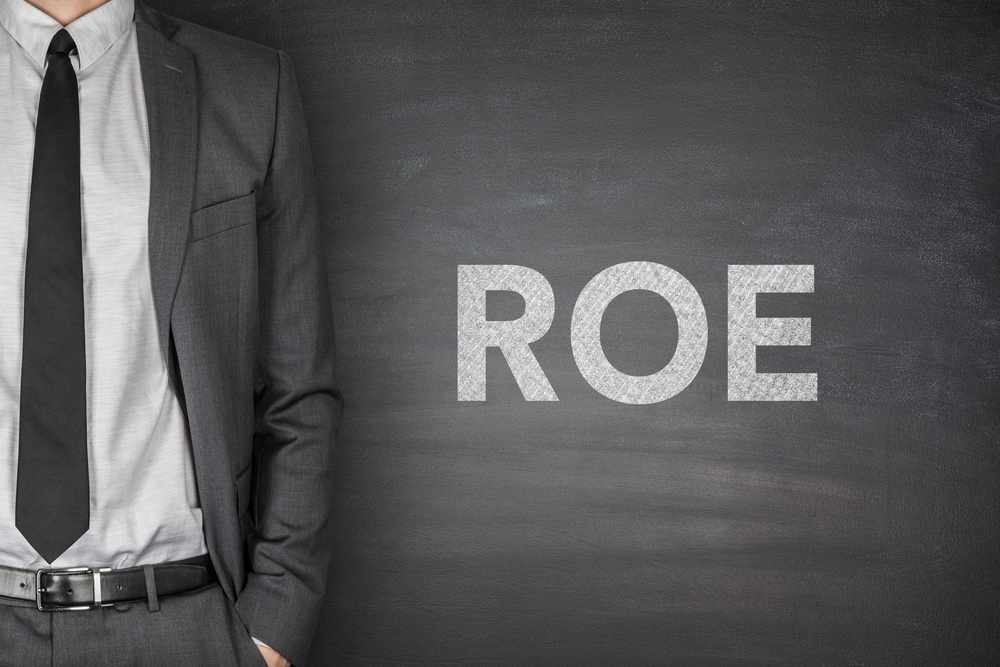If you’re looking to invest in a company, you’ll want a reliable way to measure that company’s profitability. After all, what’s the point in investing if your returns aren’t worthwhile? Return on equity, or ROE for short, does exactly that.
But, what is return on equity, exactly? ROE measures the profitability of a company, and is one of the most important metrics in business and investing. Below, we’ll discuss how to calculate ROE, where the numbers should be at, and how to apply this metric to your deal analyzer. Keep reading to learn more.
What Is Return on Equity (ROE)?
Return on equity (ROE) is a way for investors to measure the financial performance of a company. More specifically, it’s the company’s profitability in relation to equity. ROE measures this by comparing after-tax income against total shareholder equity.
ROE is also sometimes called return on net assets because shareholder equity is equal to a company’s net assets after debt.
Because ROE measures the percentage of investor dollars that have been converted into income, it’s a great way to determine how efficiently your company is handling your invested money. The satisfaction rate will depend on benchmarks such as industry, size, and comparison against other similar companies. Generally speaking, a company with a relatively higher ROE has a higher chance of generating income using investor dollars.
[ Thinking about investing in real estate? Register to attend a FREE online real estate class and learn how to get started investing in real estate. ]

How To Calculate Return On Equity: ROE Formula
Return on Equity is calculated by dividing a company’s net income by the average shareholder equity. This is what the formula looks like:
ROE = Net Income / Average Shareholder Equity
Net income is the company’s total income, minus its expenses and taxes over a given period. This figure can be found on the company’s income statement. Average shareholder equity is the total equity at the beginning of a period. It is calculated by subtracting the company’s liabilities from assets. You can look up the company’s average shareholder equity by looking at its balance sheet.
ROE is always expressed as a percentage, and can only be calculated if both the net income and average shareholder equity are positive numbers.
Return On Equity Calculation Example
Let’s try calculating ROE using an example. First, imagine that Company X has a net income of $2 million over one year. At the beginning of the year, the average shareholder equity was $15 million. You found these numbers by looking at Company X’s income statement and balance sheet. Using these numbers, ROE would be calculated like this:
ROE = Net Income / Average Shareholder Equity
ROE = ($2,000,000 / $15,000,000) = 0.1333
ROE = 0.1333 x 100% = 13.33%
By following the ROE formula, we calculated that Company X’s return on equity during that year was 13.33%.
How To Use The Return On Equity Formula
Calculating ROE is a useful measure for other things besides just profitability. Here are some other uses for the return on equity formula:
-
Growth Rate Estimation
-
Sustainable Growth Rate
-
Dividend Growth Rate Estimation
-
Identifying Problems
Growth Rate Estimation
One of the possible applications for ROE is to estimate the growth rate of a company. To do this, simply take ROE and multiply it by the company’s retention ratio. This ratio is the amount of net income that the company will reinvest for future growth. The more a company can invest in its growth, the more likely it is to grow in the coming years.
Sustainable Growth Rate
Investors are not only interested in a company’s projected growth, but its ability to sustain its growth over a long period. This can be evaluated by comparing the growth rate of several companies with an industry. If a company is growing quickly, and at a rate that outpaces sustainability, this requires further investigation. Although all investors are attracted to growth, risk is always a factor to consider.
Dividend Growth Rate Estimation
Return on equity can also be used to estimate a company’s dividend growth rate. This estimate is derived by multiplying ROE by the payout ratio. The payout ratio is how much net income is returned to shareholders in the form of dividends. Similar to the sustainable growth rate, investors should be wary if a company’s dividend growth rate is above a sustainable rate of growth for that specific industry.
Growth Rate Pitfalls
Measuring growth rates is an important tool for understanding how financial landscapes change over time. However, growth rates are not without certain pitfalls. For starters, a growth rate only takes into account the net change between two data points within a given time frame. However, this calculation doesn’t take into account external factors that could have impacted this rate, such as price fluctuations or volatility in the market.
Second, growth rates tend to ignore the context. For instance, one small company may have a growth rate of 30 percent, while a large company may only have a growth rate of 3 percent. For the small company, the nominal change is actually only a few thousand dollars. In contrast, for the larger company with the much smaller growth rate has a nominal change of millions of dollars. When reporting financial calculations, it’s important to provide additional benchmarks to help provide the full context.
Identifying Problems
One might think that stocks with a high ROE make for a great value, but that’s not always the case. As an investor, you should always do your due diligence and make sure that your company of interest can offer solid ROE, but also grow at a sustainable rate. If you find a company with a really high ROE, you should pause.
Make sure you look for possible issues such as profit inconsistency, excess debt, and negative net income.
-
Profit Inconsistency
-
Excess Debt
-
Negative Net Income
A high ROE can sometimes signal inconsistent profit, so be very careful. The ROE formula itself will clue you into how this could be the case. Let us say Company Z has reported losses for several years in a row. These losses are logged in the equity section of the balance sheet as a retained loss. As a negative number, it reduces the amount of shareholder equity.
Now, let’s say Company Z suddenly hits a home run and has a great year. When calculating ROE for that year, you’re taking a high net income, but then dividing it by a very small denominator, the shareholder equity. Because of simple math, this will result in a misleadingly high ROE.
Another common issue that comes with a high ROE is excess debt. Remember, equity is equal to net assets after debt. If a company has been borrowing aggressively to stay afloat, you again have an example where the denominator becomes very small. This results in a high ROE that could lead you astray. Learn how to calculate you debt-to-equity ratio here.
Last but not least, negative net income can be another pitfall for investors. Earlier, it was mentioned that ROE should not be calculated if either net income or equity is negative. Both negative net income and negative shareholder equity can create a falsely high ROE. If a company needs to report a net loss, rather than a net income, then ROE should not be calculated.

What Is A Good Return On Equity?
Now that we know what return on equity is, what is a good ROE? Earlier, we used Company X as an ROE calculation example. The example resulted in a 13.33% ROE. Perhaps you were left wondering if 13.33% ROE is good, bad, or neutral. When it comes to percentages, you need benchmarks so that you have something to compare the ROE with. As a rule of thumb, you should compare your ROE with other companies of similar sizes, within the same industry. In general, however, a good ROE hovers around 15 to 20 percent.
Investors want to target companies that have a higher ROE than the industry average. A good return on equity signals a company’s ability to turn a profit without requiring as much money to do so.
Summary
What is return on equity? Simply put, return on equity is a way for investors to measure how efficiently a company can use investor funds to turn a profit. Expressed as a percentage, ROE can be determined as good or bad by comparing it with industry averages. Return on equity is also a helpful tool for investors when digging into the financial health of a company. It can be used to estimate the growth rate, the sustainability of that growth, as well as to estimate the growth rate of dividends. When you find a company with a high ROE, tread carefully. In some cases, an ROE can be artificially high due to financial pitfalls. Before getting excited, make sure you mind your due diligence. Take the time to analyze a company’s balance sheets and income statements before taking the plunge.
Ready to start taking advantage of the current opportunities in the real estate market?
Click the banner below to take a 90-minute online training class and get started learning how to invest in today’s real estate market!

